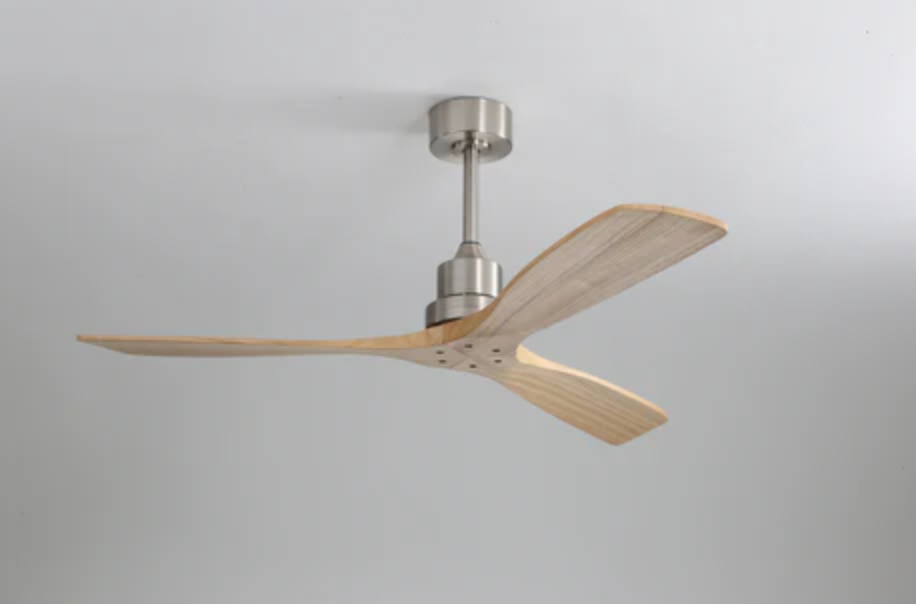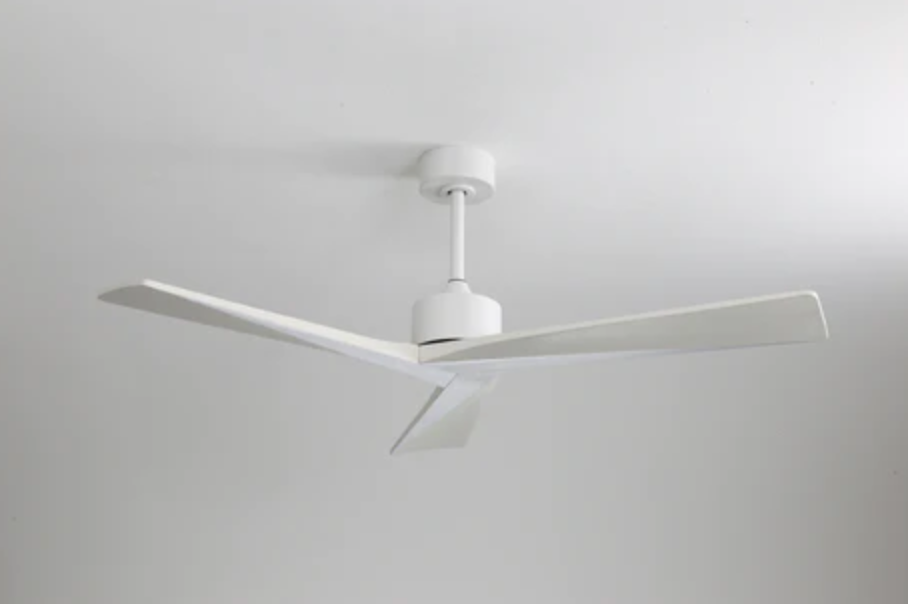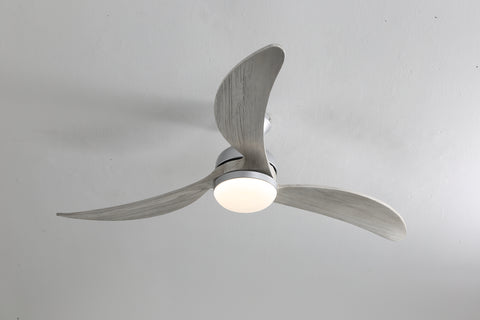
Safety Issues and Precautions of Ceiling Fans
Introduction: Ceiling fans are a common feature in many homes and provide comfort and circulation of air. However, it's important to be aware of potential safety issues associated with ceiling fans and take necessary precautions to ensure the well-being of everyone in the household. In this article, we will explore the safety concerns and precautions you should be mindful of when using round ceiling fan and other types of ceiling fans.
1. Installation Safety:Proper installation is essential for the safe operation of ceiling fans. Here are some important safety considerations during the installation process:
Professional Installation: While some homeowners may choose to install ceiling fans themselves, it is generally recommended to hire a professional electrician for the installation. Electricians have the expertise and knowledge to ensure correct wiring, proper mounting, and secure installation. Professional installation minimizes the risk of electrical hazards and ensures the fan is safely integrated into your home's electrical system.
Adequate Support: small ceiling fan with light must be securely attached to the ceiling using a suitable electrical box and mounting hardware. Ensure that the electrical box is designed to support the weight and movement of the fan. If your home's electrical box is not rated for ceiling fan installation, it is crucial to upgrade it to prevent accidents and ensure stability.

Proper Wiring: Follow the manufacturer's instructions and adhere to electrical codes when wiring your ceiling fan. Make sure the electrical connections are secure and properly insulated to prevent electrical shorts, sparks, or fires. If you are uncertain about the wiring process, consult a professional electrician to avoid any safety risks.
2.Operating Safety: Proper operation and usage of ceiling fans are crucial for maintaining a safe environment. Consider the following safety precautions when using ceiling fans:
Height Clearance: ceiling fan with remote should be installed at an appropriate height to ensure sufficient clearance. Maintain a minimum distance of 7 feet (2.1 meters) between the fan blades and the floor. This prevents accidental contact with the spinning blades and reduces the risk of injuries.
Blades Clearance: Keep furniture, décor, and any other objects at a safe distance from the ceiling fan blades. The recommended minimum clearance between the fan blades and any surrounding objects is 2 feet (60 centimeters). This prevents objects from interfering with the fan's rotation and reduces the risk of damage or accidents.
Secure Fan Blades: Periodically inspect and ensure that the fan blades are securely attached to the fan motor. Loose or unbalanced blades can result in wobbling or detachment during operation, posing a safety hazard. If you notice any loose blades, tighten them following the manufacturer's instructions or seek professional assistance if needed.

Use a Sturdy Downrod: If your ceiling fan is mounted using a downrod, ensure that it is securely attached and of adequate strength. A weak or improperly installed downrod can lead to the fan becoming loose or falling, potentially causing injuries or property damage. Refer to the manufacturer's guidelines for selecting and installing a suitable downrod.
Use the Correct Controls: Use the correct controls, such as wall switches, pull chains, or remote controls, to operate your ceiling fan. Avoid using improper or damaged controls, as they can lead to malfunctions or electrical hazards. If you notice any issues with the controls, replace them following the manufacturer's recommendations or consult a professional.
Child Safety: Take special precautions to ensure the safety of children around ceiling fans. Keep cribs, beds, and other furniture away from the fan's reach. Install protective covers or guards over the fan pull chains to prevent accidental entanglement. Educate children about the potential dangers associated with ceiling fans and instruct them to stay
away from the fan and its moving parts. Supervise young children to ensure they do not play with or tamper with the fan's controls or blades.
3.Maintenance and Inspection: Regular maintenance and inspection are essential to ensure the ongoing safety of your ceiling fan. Consider the following precautions:
Regular Cleaning: Dust and debris can accumulate on the fan blades, leading to an imbalance and reduced performance. Regularly clean the fan blades using a soft cloth or a duster to remove dust and dirt. Avoid using abrasive cleaners or harsh chemicals that can damage the fan's finish or motor.
Lubrication: Ceiling fans with bearings may require periodic lubrication to maintain smooth operation. Consult the manufacturer's instructions to determine if your fan requires lubrication and the recommended lubricant to use. Lubricating the bearings helps minimize friction and reduces noise. Follow the instructions carefully to ensure safe and effective lubrication.
Inspect for Damage: Regularly inspect your ceiling fan for any signs of damage, such as loose screws, cracks in the blades, or frayed wires. If you notice any issues, discontinue use and address the problem promptly. Damaged components can compromise the fan's stability and increase the risk of accidents or malfunctions.
Check for Wobbling: Occasional wobbling of ceiling fans is common, but excessive or persistent wobbling can indicate a problem. If you notice significant wobbling, it may be a sign of unbalanced blades or an installation issue. Turn off the fan and check for loose or bent blades, loose mounting hardware, or an unlevel installation. Correct any issues to ensure safe and stable operation.
Be Mindful of Fan Speed: Ceiling fans typically have multiple speed settings, and it's essential to use them appropriately. Avoid running the fan at excessively high speeds, as this can create excessive air movement and increase the risk of objects being thrown or falling. Use the fan at a speed that provides comfortable airflow without causing discomfort or hazards.
4.Be Cautious During Maintenance: When performing maintenance tasks, such as cleaning or changing bulbs, exercise caution. Ensure the fan is turned off and completely stopped before reaching near the blades. Use stable ladders or step stools when accessing the fan, and avoid overreaching or putting yourself in an unstable position.
5.No hanging objects on ceiling fans
Do not hang things on the ceiling fan, and do not touch the running ceiling fan.
When the ceiling fan is running, do not throw any objects under the ceiling fan, do not jump under the ceiling fan, do not lift children under the ceiling fan to prevent human body or other objects from touching the ceiling fan, which may cause mechanical damage.

6.Reduce switching times
How to use ceiling fans correctly, it is recommended to start from strong wind and reduce the number of switches. It is generally believed that starting from the breeze when starting ceiling fans will save more electricity, which is better for the ceiling fan parts. In fact, this is not the case, starting from strong wind is the correct way to start.
Also, avoid frequent starting of ceiling fans to prevent motor overheating. Artificially increasing the number of switches will shorten the service life of ceiling fans.
7.Check ceiling fans regularly
For ceiling fans that have been in use for more than one year, a comprehensive inspection shall be carried out, mainly to check whether the joints of all parts of the suspender and the hooks are well stressed and firm, and whether the suspender, screws, wiring base and blades of the ceiling fan are loose, corroded, corroded, cracked and deformed.
If there are loose screws, tighten them and replace the damaged parts in time. For screws and pins of ceiling fans, the wear degree should be checked every 2-3 years, and the badly worn parts should be replaced in time.
8.Do not power on for a long time
If the ceiling fan with led light runs for a long time, the electric machine will get hot. It should be shut down properly and then opened after waiting for a period of time.
After 2 to 3 hours of continuous operation, the ceiling fan needs to be shut down for heat dissipation, so as not to cause the motor of the ceiling fan to burn down due to overheating of the parts.
Conclusion: Ceiling fans are efficient and valuable appliances for cooling and circulating air. However, it's crucial to prioritize safety by adhering to proper installation practices, following operating precautions, and conducting regular maintenance and inspections. By being mindful of safety issues and taking necessary precautions, you can enjoy the benefits of a ceiling fan while ensuring the well-being of everyone in your home. Remember, if you encounter any significant problems or doubts, it's always advisable to consult a professional electrician or the fan manufacturer for guidance. Stay safe and enjoy the comfort of your ceiling fan worry-free.
